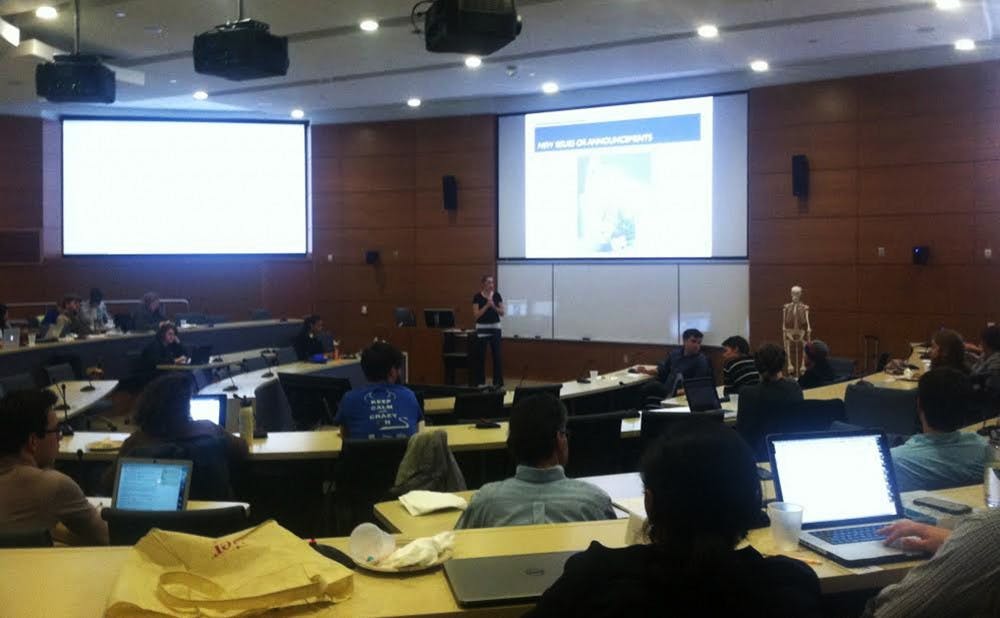The Graduate and Professional Student Council met Tuesday night to give feedback regarding Duke’s new strategic plan.
Despite low attendance due to inclement weather, GPSC convened to discuss revisions to bylaws, pass two environmental resolutions and hear about the new strategic plan from Susan Lozier, Ronie-Richelle Garcia-Johnson Professor of Earth and Ocean Sciences and chair of GPSC's steering committee.
“This steering committee is really looking for input from graduate and professional students,” Lozier said.
Faculty members have proposed new strategies to better meet the academic needs of graduate and professional students including J-terms, graduate sabbaticals, increased fellowships and a more modular approach to postgraduate education to decrease cost.
Lozier said that the last strategic plan, which was implemented in 2006, emphasized undergraduate education, seeking to distinguish it from peer institutions through efforts in interdisciplinary education and globalization.
Representatives met in caucuses to generate ideas before presenting to the council. Most suggestions centered around the issues of career placement and professional development and included structured mentorship, customizable study plans, changing the curriculum to reflect the current job market and utilizing alumni resources.
Other suggestions were to add research projects to the graduate schools in the same way that the professional schools utilize them, and to extend graduate school programs to an automatic six years instead of five.
During their meeting, GPSC also passed two resolutions related to environmental concerns.
The resolution on bird collisions, which urges the University to seriously consider the issue of bird collisions in new buildings and take steps to retrofit windows in existing problem architecture, passed unanimously. Students had partnered with 45 other universities, and Duke had the most bird deaths related to collisions, which refers to birds dying by flying into buildings.
“We’re number one,” said Scott Winton, a graduate student in the Nicholas School of the Environment, who noted that two thirds of the recorded deaths occurred around the Fitzpatrick Center at the Pratt School of Engineering.
Winton said the simple solution exists in easily-purchased window treatments for the existing buildings, and using more bird-friendly designs in future construction projects.
GPSC also passed the Forest Preservation Resolution, which is aimed at declaring Anderson Woods a permanently protected natural area. Concern over their potential destruction stemmed from plans to build the new Health and Wellness Center in this area, which serve both aesthetic and educational purposes.
Although initial turnout was low, GPSC ultimately had 57 members in attendance, exactly enough to make quorum, the number necessary to pass resolutions.
In other business:
Members of the Executive Board presented on their respective positions. Elections for the following academic year will take place at their next meeting March 17.
The Finance Committee expects a revenue of $150,500 for next semester, but has approved budgets to expend $154,800 to begin decreasing the current surplus of $38,000 from underfunding student activities in the Fall.
Get The Chronicle straight to your inbox
Signup for our weekly newsletter. Cancel at any time.

